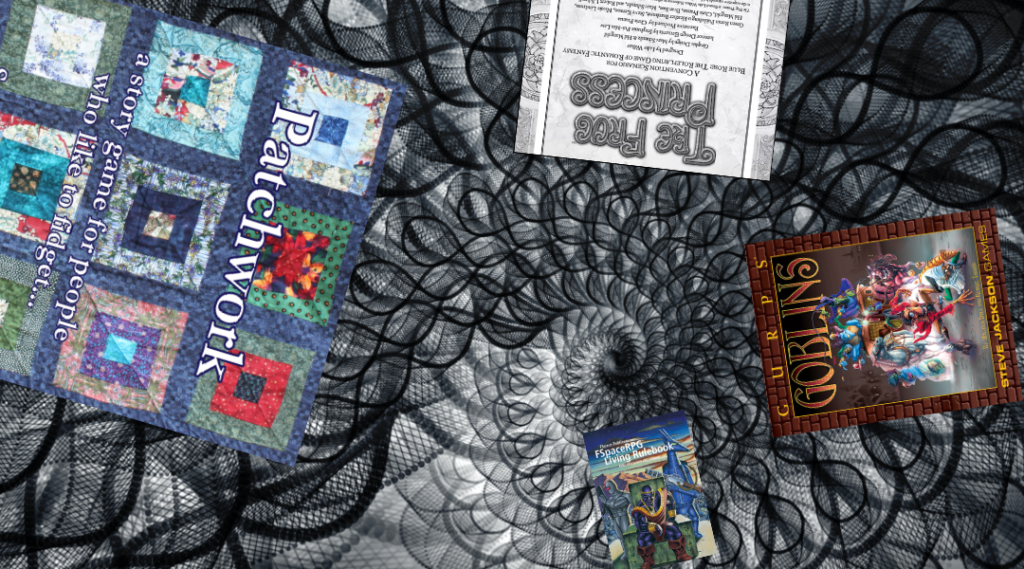 Let’s start with goblins.
Let’s start with goblins.
Making games, and content for games, in Aotearoa New Zealand was not always easy. We had game designers like everywhere else, but their games tended to get shared among their small groups of friends, and mostly disappeared without a trace.
(One of my favourite game designs ever, and a huge influence on my own game designer journey, was a Famous Five RPG by Karen Wilson, to my knowledge only ever played by Karen’s personal friends in the mid-90s. This game had just two abilities, Boy Stuff and Girl Stuff, and a more satirically astute piece of game design I’ve never seen. But I digress!)
Back then, sharing your game around with your friends was about the extent of it. Because what else were you going to do, try and publish it? Or even crazier, try and get a Real Genuine Proper Overseas RPG Company to publish it?
In 1992, Malcolm Dale wrote a satirical game about desperate vagabonds in 19th century London called Goblins, and with the urging and support of Klaude Thomas, hand-printed and released it into various shops around Auckland. They did it! But that’s not all:
In 1996, Malcolm and Klaude both had their names on the cover of GURPS Goblins, released by Steve Jackson Games, an adaptation (and beautification) of their game to GURPS rules. They had achieved validation from someone from overseas, the dream of every New Zealander! And now, the floodgates were opened!
Note: floodgates were not, in fact, opened. It remained very difficult to get games from here to the world.
Surfing The Internets
Another early building block for Kiwi RPG design was FSpace, by Martin Rait. A development of the FED RPG (1990 – the earliest Kiwi RPG?), developed through the ’90s towards a formal publication by 2000 and in continuous release to this day (get it in the DriveThru bundle!), this imaginative science fiction game in the tradition of Traveller made early use of digital media: I have a spiral-bound hard copy on my game shelves which came packaged with a CD-ROM! By 2002 FSpace was firmly established on the web. Being an early adopter of digital publication has helped FSpace to build up a solid core of fans and followers it maintains to this day.
Helped by increasing connectivity via the internet, Kiwi designers began to find ways to overcome the distance and get involved in the industry. Conan McKegg contributed to a 2001 book for legendary game line Tribe 8. A.J. Pickett was published in Palladium’s Rifter magazine in 2003. In 2004 I was contributing horror-themed articles to Mongoose Publishing’s magazine Signs & Portents (including an unofficial Doctor Who RPG “Time Space Voyager” that is sadly completely unavailable now!) Luke Walker and Conan both wrote for the Wilderness Bestiary (2003) for Mechanical Dream. In 2006 Luke’s scenario for Blue Rose, ‘The Frog Princess’, was published as a free web exclusive by Green Ronin.
And the Frog Princess is a good excuse to hop sideways, because it actually began as an entry into…
The Kapcon SDC
Let’s pay some respect to a central hub of KiwiRPG game design and creativity: the Kapcon Scenario Design Competition. Through the 00s, Wellington’s Kapcon convention held a competition each year inviting submissions of playable game scenarios. The result is a free, public collection of games for all.
Many scenarios contained unique rulesets, so this repository is also a hub of indie game design! Early bare-bones resolution systems, as in Matt Cowens’s marvellous Amnesia, opened space for real innovation, as with Jamie Sands’ Matchmaking & Machinations (a redesign of Wuthering Heights to suit Jane Austen), the Penny Dreadful RPG by Matt & Debbie Cowens, Matt’s Simple Neolithic RPG, Bleeding Hearts by Donna Giltrap, Stephanie Pegg’s Patchwork, and more!
Although the SDC is no longer running, all these games and scenarios are still available for you to download and play, and they are absolutely worth exploring.
What about the future?
If you’ve been following these tour-of-games blog posts, you might have noticed two related things about the #KiwiRPG game design scene: not many games that are actually about Aotearoa New Zealand itself, and not many designers who are identifiably Māori. (You can probably guess some reasons why – a big one starts with C and ends with OLONISATION – and if you want to explore those, Liam and I get right into all of it in the latest episode of the Toa Tabletop podcast.) But it’s clear from the state of things that access matters.
The SDC page is a glimpse into history, into a time when sharing game content online was still an unsolved problem. (My first game, dREAL, was distributed solely via a link in the automatic footer of posts I made on the RPG.net forums. These were the tools we had!)
Now, the resources needed to make and distribute games are easily available. Make it on google docs, use free images from unsplash, upload to itch or drivethru, market on twitter and reddit… Everyone carries around in their pockets the power to become an RPG publisher, the kind of power those 1990s innovators could only dream of.
While barriers remain, the power to create has never been greater. Those of us behind KiwiRPG week are keen to support new voices – hey you, creative person, we’re ready, just ask – but we also know that these new voices don’t need us. We’re what we should be, just another resource to a new generation: google, unsplash, drivethru, KiwiRPG.
The future of making games in Aotearoa is simply this: more voices.
Hey you, creative person: make your thing.
– morgue and the KiwiRPG crew